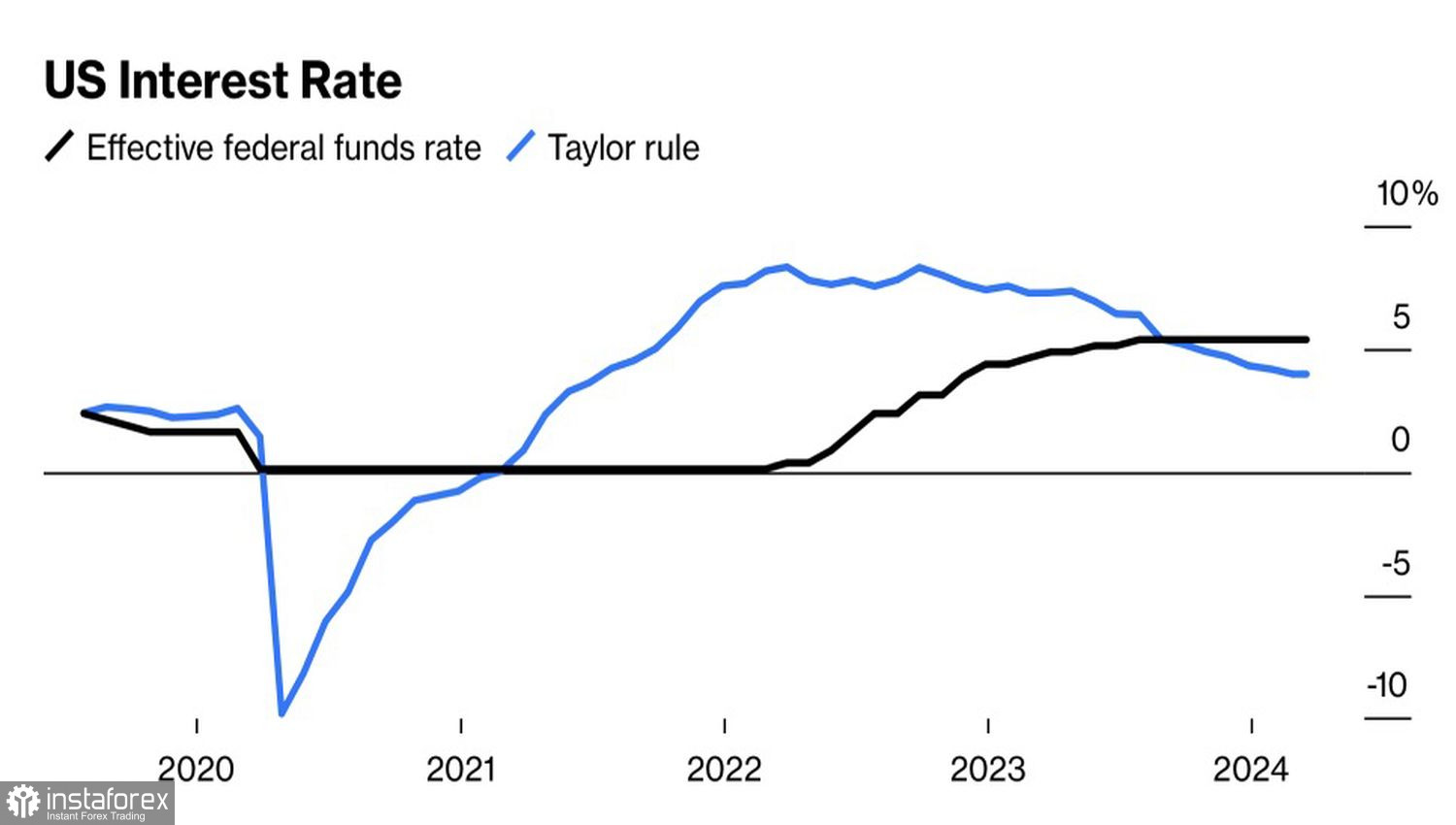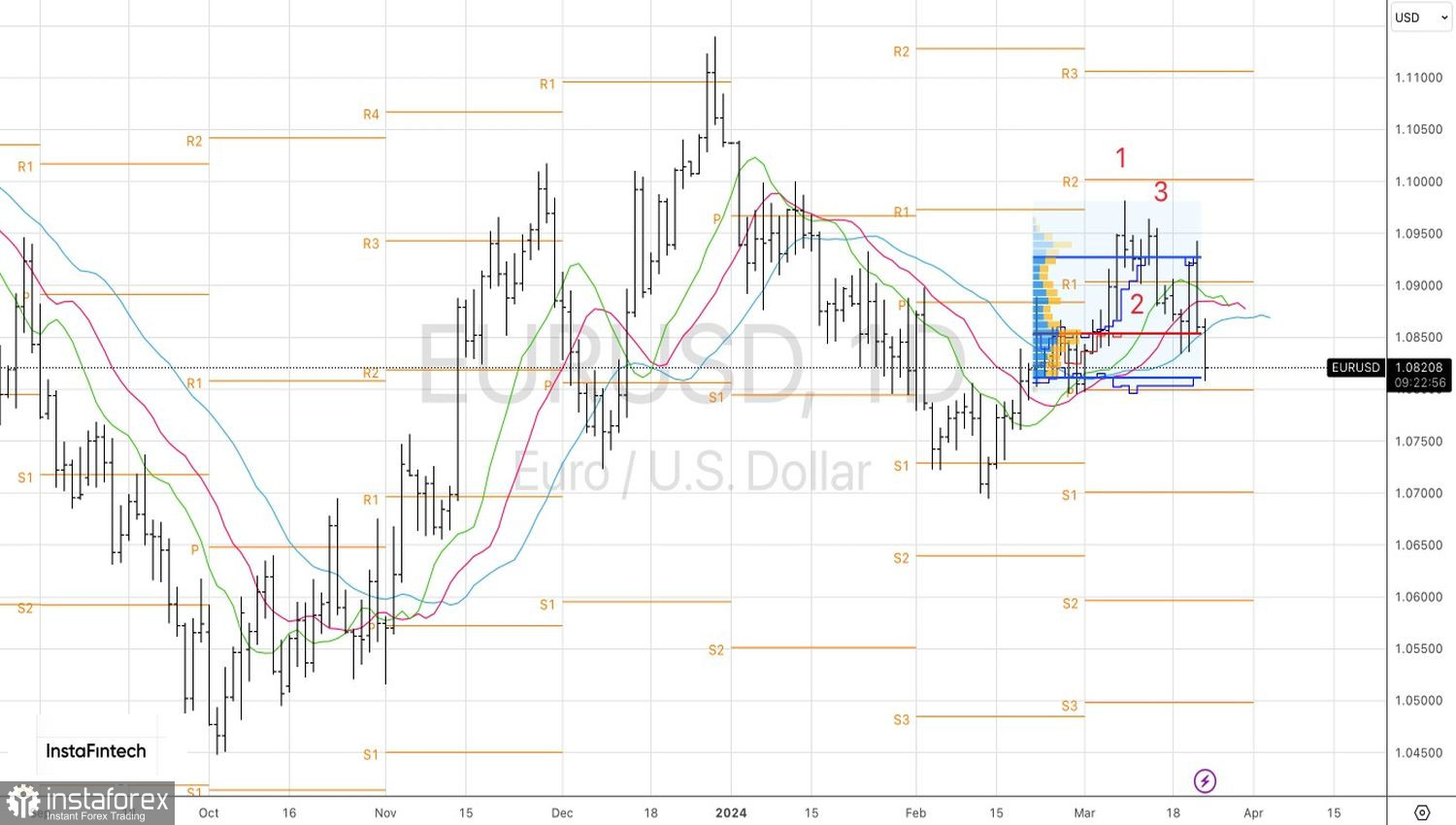The Federal Reserve is constantly under criticism. In 2022, the American Central Bank was accused of tightening monetary policy too late, and now—of delaying the reduction of the federal funds rate. According to the Taylor rule, which links unemployment and inflation, the borrowing cost in the U.S. should be at 4%. Yet, it remains stagnant at 5.5%. The Fed is dragging its feet, causing the EUR/USD to fall.
If everything were as in textbooks, losers on Forex would be hard to come by. However, one cycle doesn't necessarily follow another. On paper, the aggressive monetary restriction by the Fed cools down the economy and leads it into a recession. In real life, a 525 bps increase in the federal funds rate didn't crack the GDP. Gross Domestic Product continues to expand, heightening the risks of new inflation peaks and compelling the Fed to keep the borrowing cost flat.
Fed rate dynamics and the Taylor rule

In Europe, the situation is different. The eurozone economy suffered from the armed conflict in Ukraine, energy crisis, and the Middle East fire. Fiscal stimulus due to the pandemic were not as substantial as in the U.S., and productivity didn't grow as rapidly as in North America, where artificial intelligence technologies are actively being implemented.
Unfortunately, even improvements in macrostatistics do not prompt "bull" attacks on the EUR/USD. Thus, the rise in the composite Purchasing Managers' Index to a nine-month high in March didn't inspire the euro. Neither did the improvement in German business expectations from IFO. If we add to this the record trade surplus volumes of the eurozone and the positive from other indicators, we can start looking optimistically into the future. Unfortunately, this doesn't help the main currency pair.
European business activity dynamics

Along with the rhetoric of ECB officials, Joachim Nagel began to echo the same sentiment after Christine Lagarde's statement that the central bank will not commit to lowering the deposit rate at every Governing Council meeting. According to the head of the Bundesbank, the first easing of monetary policy will occur before the summer holidays, but it should not be assumed that it will persist at every subsequent meeting. Monetary policy is contingent on data, and the ECB must exercise caution.

Thus, neither the positive from macrostatistics in the eurozone nor the cautiousness of the European Central Bank help the bulls on the EUR/USD. Investors fear that the Fed will postpone the date of the first federal funds rate cut against the backdrop of a strong economy and accelerating inflation and are buying the U.S. dollar.
Technically, on the daily chart of the EUR/USD, a clear reversal pattern 1-2-3 was implemented. The inability of the bulls to keep the pair's quotes above the upper boundary of the fair value range 1.081–1.093 became a sign of their weakness and a reason to sell from the level of 1.09. We hold and periodically increase shorts with a target at 1.07.
 English
English 
 Русский
Русский Bahasa Indonesia
Bahasa Indonesia Bahasa Malay
Bahasa Malay ไทย
ไทย Español
Español Deutsch
Deutsch Български
Български Français
Français Tiếng Việt
Tiếng Việt 中文
中文 বাংলা
বাংলা हिन्दी
हिन्दी Čeština
Čeština Українська
Українська Română
Română

